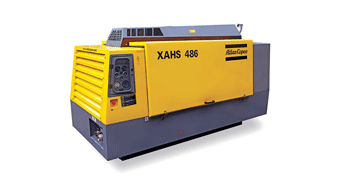
Portable Power Solutions
Portable power solution plays a major role in verticals such as construction, mining, exploration and oil and gas. Most of the OEMs have launched new range of solutions with breakthrough technology with a focus on fuel efficiency, adaptability to specific application needs of the market; optimising operation and maintenance (O&M) cost, serviceability, and safety.
Like any other industry, the portable power solution sector also has been passing through tough times due to various factors such as mining closures, slow infrastructure growth, inflation, interest rates, and global slowdown. All such factors have in turn impacted the growth of export market. Though there exists a gap in demand and supply, it is not too large and hence there are companies with futuristic plans who have invested in enhancing their plant capacities. Says Vinay Jain, Business Line Manager - Portable Energy, Atlas Copco, "In India, unlike globally, generators have no specific differentiation in terms of portable and stationary and hence it would be difficult to give any idea on the numbers on portable generators. However, to estimate the portable compressor market, this should be in the range of Rs 1.7 billion to 1.8 billion and the quantities could range from 2,200 to 3,000 units, basis 2013. The CAGR of portable air specifically for the construction and mining sector would be close to 7 per cent."
According to AP Yogananda, Product Manager, Doosan Portable Power Division, the overall demand-supply scenario is moderate. Total value in terms of market number would reach about 3,700 which is down compared to the figure of 2013. Going forward, the construction market is expected to grow with a CAGR of 5-6 per cent for 2015, while mining would not see much improvement based on the current market conditions. Expectancy would be about 2-3 per cent on mining for 2015. Though there is demand, legalisations and environmental factors are currently dragging the market to a corner.
Speaking about the trends in products and technology Jain says, "Over the years, this industry is also matured and now besides the initial investments, end-users do consider all other options and all these factors as well. Also, in terms of generators, India is one of the few countries which has implemented the CPCB 2 norms with effect from July 2014 which translates into very stringent noise pollution policies." Is there a technological gap in design, range offered, raw materials and components used, peripherals and manufacturing process, compared to global trends? Jain has this to say, "I would say that the gaps were very wide in terms of global and Indian technologies. But now the gaps have really reduced and most of the companies have understood the need to go global and hence all good companies have adapted similar global designs suiting Indian requirements. As mentioned earlier, Atlas Copco has recently gone ahead with a new plant at Chakan, Pune which is based on lean manufacturing concept, in line with our global standards. I am proud to say that today our Chakan plant is as good as any other Atlas Copco plant in the world." Says Yogananda, "Currently we dont find the technological gap between our mother company and us, neither to any global standards. Except only they have good T4i engines on their packages due to emission norms, whereas we have mechanical engines." He adds, "Going forward, we are working on the electronic engines for better fuel efficiency."
Jain sums with a high note. "With the global economy opening up and new initiatives from the present government, we hope to see a positive impact not only on the Indian market growth but also the export market opportunities. We foresee faster growth in segments such as the DSI, quarry and mining, general construction and special application, cable blowing as well as water-well segments. We see the challenges of Indian market as long-term opportunities!"


 +91-22-24193000
+91-22-24193000 Subscriber@ASAPPinfoGlobal.com
Subscriber@ASAPPinfoGlobal.com